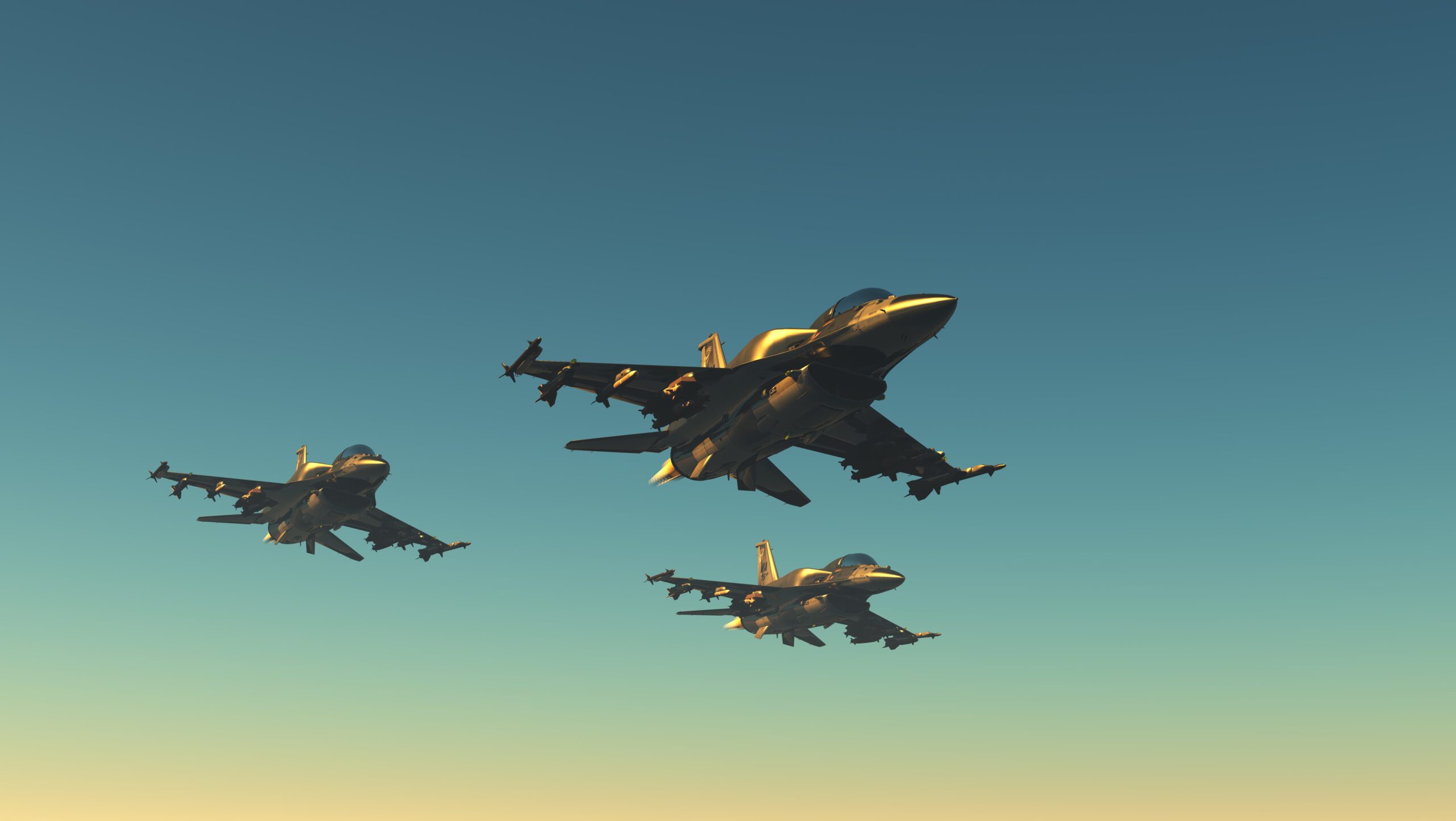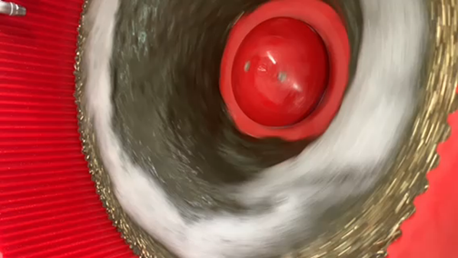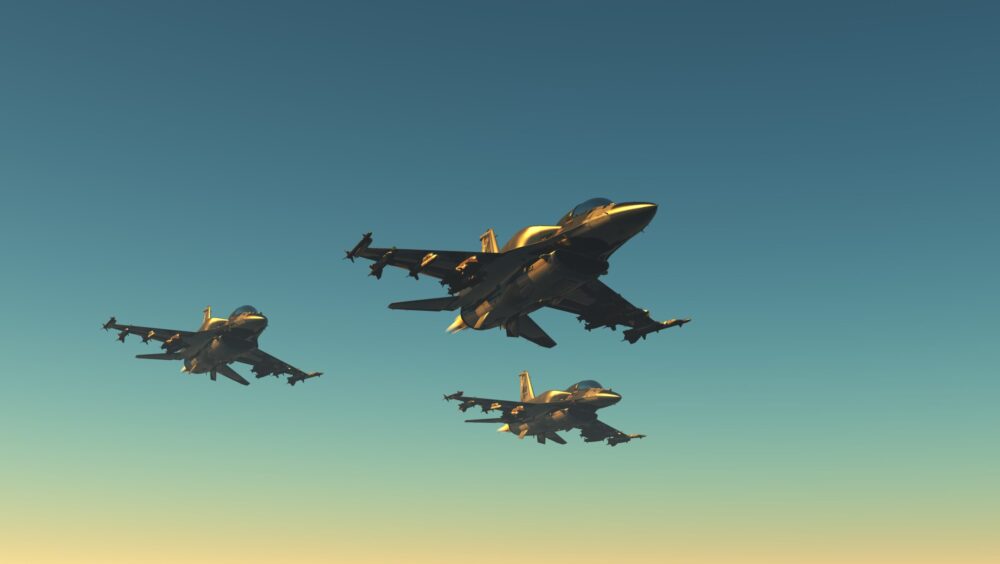Colin Spellacy, Head of Sales, Rösler UK
In the military and defence industry, precision, durability, and performance are non-negotiable. The extreme environments in which military equipment and defence systems operate demand components that can withstand harsh conditions, from heavy mechanical stress to exposure to corrosive agents. Whether it’s weaponry, armoured vehicles, aerospace components, or naval equipment, each part must meet stringent standards for strength, resilience, and reliability. This is where mass finishing and shot blasting technologies come into play, offering essential solutions for surface finishing and preparing components for these demanding applications.
Mass finishing and shot blasting technologies, commonly recognised for their ability to clean, deburr, and refine surfaces, are indispensable in military-grade part manufacturing. These processes are capable of handling materials such as metals, composites, and ceramics, ensuring that finished parts meet the rigorous demands of military and defence specifications. The importance of the finishing processes lies in their ability to address specific challenges faced by the defence sector, including durability, precision, corrosion resistance, fatigue resistance, and consistency.
KEY MILITARY & DEFENCE REQUIREMENTS
In military applications, durability is paramount. Components used in defence systems are exposed to intense wear and tear due to extreme forces, chemical exposures, and significant temperature fluctuations. Therefore, finishing processes must enhance the material’s ability to endure these harsh conditions without rapid degradation. Shot blasting and mass finishing technologies prepare surfaces for further treatments such as protective coatings, which bolster the durability of components exposed to harsh environments like battlefields, marine settings, and aerospace operations.
Precision is another critical factor in military component manufacturing. Defence systems, such as high-precision weaponry and aerospace technology, demand parts with exact tolerances and precise surface finishes. The mass finishing process ensures components are smooth and free from imperfections, while shot blasting clears away surface contaminants that could interfere with further treatments. By achieving consistent precision across parts, these technologies help to ensure that all military components function optimally without compromising safety or performance.
Corrosion resistance is an ongoing challenge in the defence sector, particularly for equipment used in naval and aerospace environments. Surface finishing processes, such as shot blasting, improve corrosion resistance by preparing surfaces for anti-corrosive coatings. This is crucial for extending the life of military components exposed to seawater, desert sand, or other corrosive environments. The improved surface texture resulting from these processes enhances the adhesion of protective layers, ensuring long-term protection against rust and other forms of corrosion.
Fatigue resistance is equally important, especially for parts that endure constant mechanical stress. Components used in defence applications, such as those found in aircraft or armoured vehicles, are subjected to repeated cycles of loading and unloading. A weak surface finish can lead to cracks and material failures over time. Shot blasting techniques like shot peening introduce compressive stresses into the material’s surface, which helps counteract the tensile stresses that lead to crack propagation. By improving fatigue resistance, these technologies help extend the operational life of critical defence components.

APPLICATIONS
Consistency and repeatability are essential qualities in mass production for military purposes. Defence equipment often requires the manufacturing of hundreds or thousands of identical components, each needing to meet stringent specifications. Mass finishing technologies ensure that each part, whether large or small, is finished to the same standard. This consistency is crucial for maintaining the performance and reliability of systems that may rely on multiple finished components working in tandem.
The applications of shot blasting and mass finishing technologies in military and defence sectors are extensive. Aerospace components, for instance, benefit significantly from these processes. Airframe structures, landing gear, and turbine blades require surfaces free of contaminants and prepared for protective coatings. Mass finishing ensures that these components have the surface smoothness necessary to reduce friction, improve aerodynamics, and enhance fatigue resistance. In aerospace defence, where performance and safety are critical, these technologies play a vital role in preparing parts for long-term use in extreme conditions.
Armoured vehicles, another key defence application, rely on shot blasting and mass finishing to strengthen components like tracks, suspension systems, and armour plates. Shot peening is particularly useful for enhancing the fatigue resistance of these parts, which are subjected to heavy mechanical stresses during operations. By introducing controlled compressive stress into the material, shot blasting helps prevent premature failure of critical vehicle components, ensuring that they remain operational in harsh environments for extended periods.

Weaponry also benefits from mass finishing and shot blasting. Rifles, artillery systems, and missile components often consist of intricately machined parts that must be free from burrs and surface imperfections. Mass finishing processes such as vibratory finishing can handle these small, precise parts, ensuring they meet the necessary surface smoothness and dimensional tolerances. Shot blasting also prepares these parts for final coatings, which protect them from wear and corrosion during use in challenging field conditions.
Naval components, which face some of the most corrosive environments due to saltwater exposure, depend heavily on shot blasting for surface preparation. Propellers, hulls, and other naval parts must be cleaned and roughened to enhance the adhesion of anti-corrosive coatings. Without proper preparation, naval components are prone to rust and deterioration, which can significantly shorten their operational life. Shot blasting ensures that these parts are properly finished to withstand the challenges of marine environments.
Defence electronics and optics, another critical area, require highly precise components with strict surface finish requirements. Military communication systems, targeting systems, and optical equipment depend on components that are finished to exacting standards. Mass finishing processes can achieve the micro-finish required for sensitive electronic parts, ensuring they perform reliably in extreme field conditions.

WHY MASS FINISHING & SHOT BLASTING?
Compared to the alternative processes, mass finishing and shot blasting stand out as the most efficient and cost-effective methods for finishing parts in military and defence applications. Unlike processes such as laser ablation or hand finishing, which are time-consuming and may be limited in scale, mass finishing and shot blasting can process large volumes of parts with complex geometries quickly and consistently.
These methods deliver uniform deburring, surface texturing, and cleaning across metal, composite, and ceramic components, which is essential for the demanding performance standards in defence systems. They also enhance the durability and fatigue strength of parts, making them more suited to withstand the harsh conditions and high-stress environments. The ability to finish components with precision, speed, and reliability, while also minimising operational costs, makes mass finishing and shot blasting superior to the more specialised but less scalable alternatives like electropolishing, honing, or electroplating.
Manual finishing processes can also introduce variability between parts, making it difficult to achieve the uniformity required in mass production. In military applications, where even minor inconsistencies can lead to performance issues or system failures, manual processes are generally not reliable.
Finishing technologies such as electroplating or chemical treatments, may enhance corrosion resistance but often fall short in improving fatigue strength. These processes are less effective at addressing surface roughness or preparing materials for further treatments, which are crucial for components that experience mechanical stress in defence applications. Additionally, electroplating and chemical treatments may not be suitable for large-scale cleaning or stress-relieving tasks, areas where shot blasting and mass finishing excel.
Laser and thermal finishing techniques, while highly precise, also have limitations. These technologies often lack the ability to enhance fatigue resistance or relieve surface stresses, both of which are essential for military components subjected to extreme forces. Additionally, laser and thermal methods are not always effective for preparing surfaces for protective coatings, particularly for large-scale defence components. Shot blasting and mass finishing offer a more comprehensive approach to surface preparation, ensuring that components are not only clean and smooth but also durable and ready for further treatments.
SUMMARY
Shot blasting and mass finishing technologies are invaluable in the production of military and defence components. Their ability to enhance durability, improve fatigue resistance, increase corrosion protection, and maintain precise surface finishes make them the ideal choice for preparing military-grade parts. While alternative processes may offer specific benefits, they often fail to provide the same level of consistency and performance demanded by defence applications. By investing in shot blasting and mass finishing technologies, defence manufacturers can ensure that their equipment is built to withstand the most challenging environments and perform reliably under the most extreme conditions.








